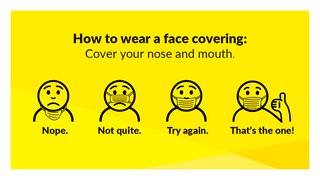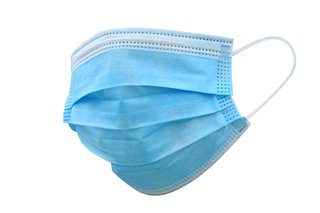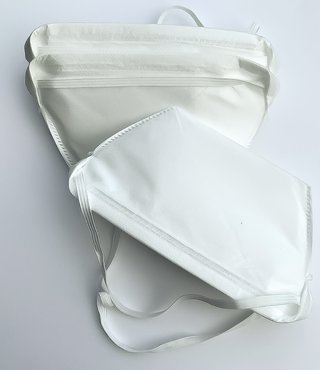A face mask is a material you wear that covers your nose and mouth. It is sometimes called a face covering.
When worn properly, all types of face masks help to reduce the spread of COVID-19 and other airborne infections. If your face mask does not completely cover your nose and mouth, it will not protect you or anyone else.
Who should wear a face mask
Anyone who wants to wear a face mask to protect themselves and others should do so.
You may be asked to wear a face mask when visiting some health and care settings. The healthcare team will let you know if you need to.
If you have symptoms of COVID-19, cold or flu, it may not be safe to visit a health or care setting. Contact them for advice before visiting.
Types of face masks
There are different types of masks available. When used properly and in higher-risk settings, medical masks and respirator masks give better protection from COVID-19 infection than cloth masks. You can buy these in shops and pharmacies.
How to choose a cloth face mask
When choosing a face mask, make sure it:
- fits snugly at the side of your face and doesn't leave any gaps
- completely covers your nose and mouth
- has 2 or more layers of washable, breathable fabric - if it is a cloth mask
Avoid masks that:
- are made of material that makes breathing difficult
- have valves or vents - these are used to protect you from dust and do not offer protection from COVID-19
Who should not wear a face mask
Face masks are not recommended for anyone who:
- has trouble breathing that is made worse by a mask
- is unconscious or incapacitated
- is unable to remove it without help
- has special needs and who may feel upset or very uncomfortable wearing them
- needs to communicate with someone who has learning difficulties, is hard of hearing or deaf
How to wear a face mask
Do
- clean your hands properly when you put on and take off your face mask
- cover your mouth and nose and make sure there are no gaps between your face and the mask
- remove it from behind - do not touch the front of the mask
- put medical and respirator masks in a bin when you remove them
- carry unused face masks in a clean sealable bag such as a ziplock freezer bag, paper bag or cloth bag
- carry a second similar type bag to put used cloth face masks in
Don't
- do not touch your face mask while wearing it – if you do, clean your hands properly
- do not use a wet or soiled face mask
- do not share face masks
- do not lower your face mask to speak, eat, smoke or vape
- do not throw away face masks in public places – you risk infecting others
- do not put single-use masks in a recycling bin – they cannot be recycled

How to stop your glasses fogging up
If you wear glasses and a face mask, your glasses may fog up.
Cleaning your glasses makes them less likely to fog up. There are special wipes for glasses that can help stop them from fogging up.
A well-fitting face mask can also stop your glasses fogging up. It should fit tightly enough to not leave any gaps around your nose.
Place your glasses on top of the seal of the face mask to try to stop your breath reaching up to your glasses. If you cannot do this, try using a small piece of surgical tape to seal the face mask to your face at the gap under your glasses.
Storing and washing cloth face masks
Store your face mask at home in a dry, breathable bag to keep it clean between use. For example, a paper or cloth bag.
Wash your cloth face mask whenever it gets dirty or at least every day.
When to throw out a cloth face mask
Throw out a reusable face mask if it:
- no longer covers the nose and mouth
- has loose or damaged ties or straps
- does not stay in place on your face
- has holes or tears in the fabric

